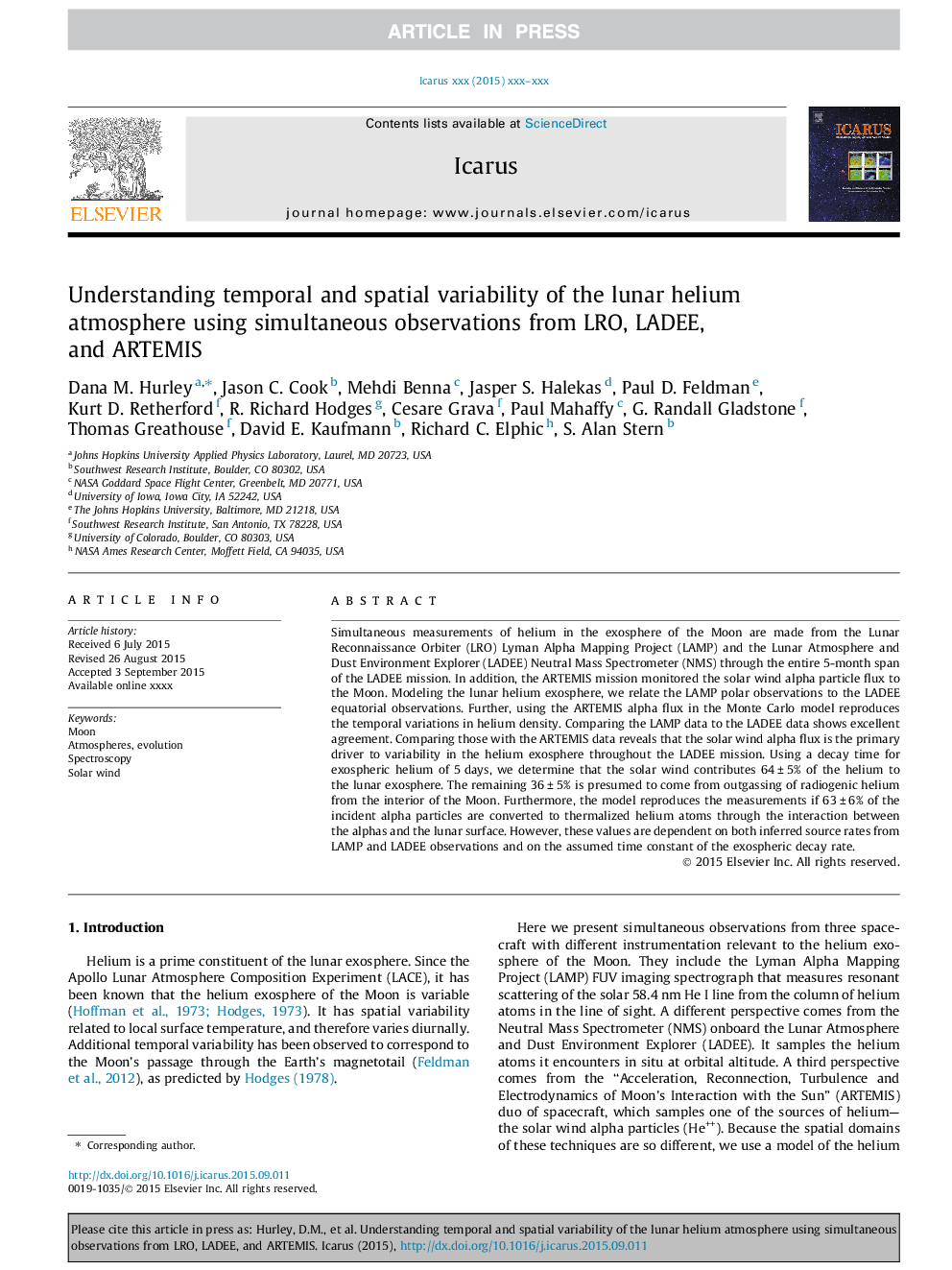| Article ID | Journal | Published Year | Pages | File Type |
|---|---|---|---|---|
| 8135067 | Icarus | 2016 | 8 Pages |
Abstract
Simultaneous measurements of helium in the exosphere of the Moon are made from the Lunar Reconnaissance Orbiter (LRO) Lyman Alpha Mapping Project (LAMP) and the Lunar Atmosphere and Dust Environment Explorer (LADEE) Neutral Mass Spectrometer (NMS) through the entire 5-month span of the LADEE mission. In addition, the ARTEMIS mission monitored the solar wind alpha particle flux to the Moon. Modeling the lunar helium exosphere, we relate the LAMP polar observations to the LADEE equatorial observations. Further, using the ARTEMIS alpha flux in the Monte Carlo model reproduces the temporal variations in helium density. Comparing the LAMP data to the LADEE data shows excellent agreement. Comparing those with the ARTEMIS data reveals that the solar wind alpha flux is the primary driver to variability in the helium exosphere throughout the LADEE mission. Using a decay time for exospheric helium of 5 days, we determine that the solar wind contributes 64 ± 5% of the helium to the lunar exosphere. The remaining 36 ± 5% is presumed to come from outgassing of radiogenic helium from the interior of the Moon. Furthermore, the model reproduces the measurements if 63 ± 6% of the incident alpha particles are converted to thermalized helium atoms through the interaction between the alphas and the lunar surface. However, these values are dependent on both inferred source rates from LAMP and LADEE observations and on the assumed time constant of the exospheric decay rate.
Related Topics
Physical Sciences and Engineering
Earth and Planetary Sciences
Space and Planetary Science
Authors
Dana M. Hurley, Jason C. Cook, Mehdi Benna, Jasper S. Halekas, Paul D. Feldman, Kurt D. Retherford, R. Richard Hodges, Cesare Grava, Paul Mahaffy, G. Randall Gladstone, Thomas Greathouse, David E. Kaufmann, Richard C. Elphic, S. Alan Stern,
